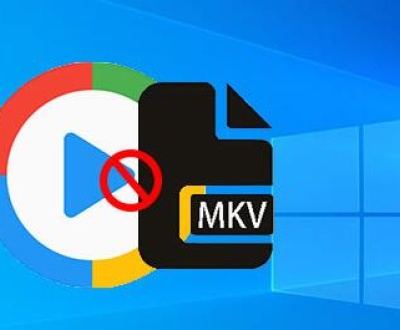Losing precious photos from an SD card can be a heart-wrenching experience, whether it’s due to accidental deletion, formatting, or corruption. SD cards are commonly used in a variety of devices like digital cameras, smartphones, and drones. They serve as the main storage medium for pictures, videos, and other files. But despite their small size and portability, they are vulnerable to issues like file loss.
Fortunately, recovering deleted photos from an SD card is often possible, as long as you act quickly. When a photo is deleted from an SD card, the file itself is not immediately erased. Instead, the space it occupied is marked as free for new data, which means that the chances of recovering deleted files depend on how much new data has been written to the SD card since the deletion.
Understanding the reasons behind the deletion of photos can help in troubleshooting and prevent future issues. Common causes of photo loss include:

Accidental Deletion: One of the most common reasons for losing photos is user error. You might delete a photo or even an entire folder of photos without realizing it, or you could accidentally format the SD card while trying to perform other operations.
Corruption: SD cards can become corrupted for various reasons, such as improper ejection from a camera or computer, power failure during data transfer, or bad sectors on the card. Corruption can make your photos inaccessible or cause them to be unreadable.
Formatting: Formatting the SD card, whether intentionally or unintentionally, removes the file system and makes it difficult to access stored data. However, formatting often only removes the index of files and not the actual data, which means that recovery is still possible in many cases.
Virus or Malware: Malicious software can sometimes infect SD cards, causing files to be deleted or corrupted. This is particularly common when the card is used across multiple devices or if the devices are not secure.
Physical Damage: If the SD card suffers physical damage, such as from water, extreme temperatures, or physical wear and tear, the files stored on it may become inaccessible. In some cases, this can lead to data loss.
Improper Ejection: When you remove an SD card without properly ejecting it from a device, you risk interrupting data transfer processes, which can lead to file corruption or deletion.
Understanding the causes of photo loss can help you minimize future data loss by avoiding risky practices such as removing the card abruptly or exposing it to harmful environments.
Steps to Recover Deleted Photos from an SD Card
Step 1: Stop Using the SD Card
The first and most important step in recovering deleted photos from an SD card is to stop using the card immediately. Continuing to use the card after files are deleted or lost may cause new data to overwrite the deleted files, significantly reducing the chances of recovery. This is especially true if you have saved new files (such as photos, videos, or other documents) to the SD card after the deletion.
It is crucial to avoid taking new photos or videos, transferring files, or performing any other operations that involve writing to the SD card.
Step 2: Check the Recycle Bin or Trash (If Applicable)
Before jumping into more advanced recovery techniques, check the Recycle Bin or Trash folder of your computer or device. Sometimes, deleted photos can be recovered from these locations, especially if you were working on the SD card using a computer or if the device has an automatic backup system.
For example, if you use your SD card with a Windows or Mac computer, the system may temporarily store deleted files in the Recycle Bin or Trash, making it easy to recover deleted files with just a few clicks. If the files are there, you can simply restore them.
Step 3: Use Recovery Software to Scan the SD Card
If the photos are not found in the Recycle Bin or Trash, the next step is to use a data recovery program to scan the SD card for deleted files. There are several excellent data recovery tools available that can help you recover deleted photos, even if the files have been emptied from the trash or the card has been formatted.
Some popular recovery software tools include:
Panda Assistant offers two main recovery modes: Quick Scan and Deep Scan. The Quick Scan is useful for recovering recently deleted files, while the Deep Scan searches for lost data that may be more deeply buried due to formatting or corruption. The software also includes a preview feature, allowing users to view recoverable files before completing the recovery process, which helps ensure that they retrieve the correct files.
Additionally, Panda Assistant provides the option to recover files from external devices, including SD cards, USB flash drives, and external hard drives, making it an invaluable tool for photographers, videographers, and anyone who relies on portable storage for important data.
Overall, Panda Assistant is a reliable and easy-to-use tool for those looking to recover lost files and protect their digital content. It simplifies the recovery process and offers a range of features that make it an excellent choice for both home users and professionals.
Step 4: Use Command Prompt (Windows)
For more advanced users, it’s possible to recover deleted photos from an SD card using Command Prompt in Windows. The process involves using the chkdsk command, which can check the SD card for errors and attempt to fix them.
Here’s how to use Command Prompt:
Open Command Prompt: Press Win + R, type cmd, and hit Enter.
Type the chkdsk Command: In the Command Prompt window, type the following command (replacing X with the letter of your SD card drive):
bash
chkdsk X: /f
Wait for the Scan to Complete: The system will scan the SD card for errors and attempt to fix them. If it finds any issues, it will attempt to recover the data.
Check the Recovered Files: After the scan is complete, check the SD card for any recovered files.
Note that this method may not always work, especially if the files have been overwritten.
Step 5: Seek Professional Data Recovery Services
If none of the above methods work or if the SD card is physically damaged, the last resort is to seek professional data recovery services. These services are equipped with specialized tools and techniques to recover data from damaged or corrupted SD cards that might be impossible to recover through software alone.
Professional data recovery can be costly, but it’s often the only option when dealing with physical damage or highly complex file recovery scenarios. Some well-known data recovery companies include:
DriveSavers
Ontrack
SalvageData
Panda Data Recovery (for professional services)
Before opting for professional help, it’s essential to consider the importance of the lost photos and whether the cost of recovery is justified.
Best Practices to Prevent Future Data Loss
While data recovery techniques can help you recover deleted photos, it’s always better to prevent data loss in the first place. Here are some essential best practices to avoid future SD card data loss:
Always Safely Eject Your SD Card: Make sure to properly eject your SD card from your camera, smartphone, or computer before removing it. This prevents file corruption and ensures that the card is not accidentally damaged.
Back Up Your Photos Regularly: Set up automatic backups for your photos to a cloud service, external hard drive, or another storage device. This way, even if you lose your SD card data, you won’t lose your photos permanently.
Format SD Cards Properly: When formatting your SD card, use the device or software that it was intended for. Avoid formatting the card through random third-party tools, as this can cause corruption.
Use High-Quality SD Cards: Purchase SD cards from reputable brands to ensure better reliability and durability. Low-quality or counterfeit SD cards are more likely to fail and cause data loss.
Avoid Using the Same Card in Multiple Devices: Using the same SD card across various devices (such as cameras, smartphones, and computers) increases the likelihood of encountering compatibility issues and file corruption.
Losing photos from an SD card can be frustrating, but with the right knowledge and tools, recovering deleted photos is often possible. By following the steps outlined in this guide, you can increase your chances of successful recovery. The key is to stop using the SD card immediately after deletion, use recovery software or professional services, and take preventative measures to avoid future data loss.
About us and this blog
Panda Assistant is built on the latest data recovery algorithms, ensuring that no file is too damaged, too lost, or too corrupted to be recovered.
Request a free quote
We believe that data recovery shouldn’t be a daunting task. That’s why we’ve designed Panda Assistant to be as easy to use as it is powerful. With a few clicks, you can initiate a scan, preview recoverable files, and restore your data all within a matter of minutes.
Subscribe to our newsletter!
More from our blog
See all postsRecent Posts
- How to repair my usb flash drive 2025-05-09
- How to search folder in file explorer 2025-05-09
- How to search for duplicates in file explorer 2025-05-09

 Try lt Free
Try lt Free Recovery success rate of up to
Recovery success rate of up to









